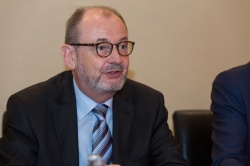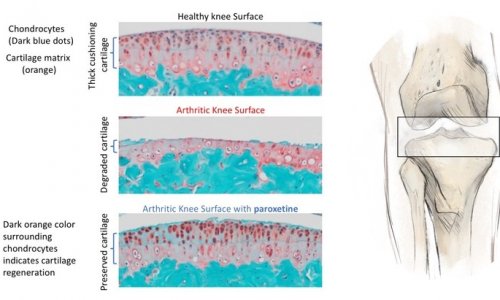Medication
Where pain relief is a matter of luck
Access to pain relieving medication varies greatly within Europe. ‘The availability and reimbursement of certain pain relieving medications for patients depends less on medical criteria than luck – living in the right country,’ declared Professor Hans Georg Kress, past president of the European Pain Federation EFIC, speaking in Vienna this September at the 9th EFIC Congress.
Report: Michael Krassnitzer

A new EFIC study, first presented at the congress, examined the gap in supply of pain-relieving medications in Europe, using oral opioid analgesics as an example. According to the study, the number of different opioid preparations available to pain patients is – as a rule – higher in Western Europe than in Eastern Europe. Germany heads the list with 47 approved oral opioid analgesics, the costs of which are assumed entirely by health insurers. Italy lies second with 42 approved and reimbursed opioids, followed by Denmark, with 37 on the market, of which only 22 are reimbursed and Sweden with 35 approved and paid medications. The tail end includes Kosovo (four approved none reimbursed), Russia (4/4), Bosnia- Herzegovina (3/0) and the Ukraine where not a single oral opioid is available.
In some European countries the health insurers or public purse reimburses opioid costs automatically, if the medication is approved. In Eastern Europe, the cost of most approved products is reimbursed. However, in most countries the official approval process is distinct from the cost absorption by the health insurers.
‘In everyday reimbursement practice, access to important pain relievers is restricted although they are officially approved and available from the chemist,’ Kress said. The pain physician at the Medical University of Vienna pointed out an example from Austria, the capsaicin bandage (8%) against neuropathic pain. Initial application must occur in a hospital. However, the health insurer will only assume the costs for the continued treatment if performed by a medical practitioner in the local practice.
However, the physician cannot bill the health insurer for the application procedure that takes some one and a half hours and therefore must offer it free of charge. Result: practically no physician is willing to do this. ‘In this way the use of the approved and demonstrably effective medication is indirectly prevented,’ Kress concluded.
‘In Austria, the provision of pain relief medicine has slid into a crisis in recent years,’ according to Dr Wolfgang Jaksch, President of the Austrian Pain Society (ÖSG). Outlining the situation in the alpine republic, he explained: ‘There is no legal mandate that hospitals perform out-patient pain treatment. Since personnel and financial resources are being cut constantly, that is just where they are being reduced.’
Jaksch named two other countries, which, in his view, act as models of supplying patients with pain medication. In 2010, Italy adopted a law (Legge 38) in which the foundation for a major structural improvement in pain medical care was laid. It grants citizens the right to palliative and pain medical care and obliges the Italian regions to provide a comprehensive selection of pain and palliative medical care. Among other things, a post-doctoral masters degree in pain therapy has also been introduced.
In the course of a reform in Belgium, two and a half years ago, 34 specialised facilities, situated in hospitals, spread across the whole country, have been approved as ‘multi-disciplinary pain centres’ through an accreditation process. Their job is to treat chronic – and in certain cases of sub-acute – pain both on an out-- and inpatient basis. In addition to such highly specialised facilities, every Belgian hospital has been obliged to create interdisciplinary pain teams, which will be remunerated in the context of the regular hospital financing.
24.11.2015





